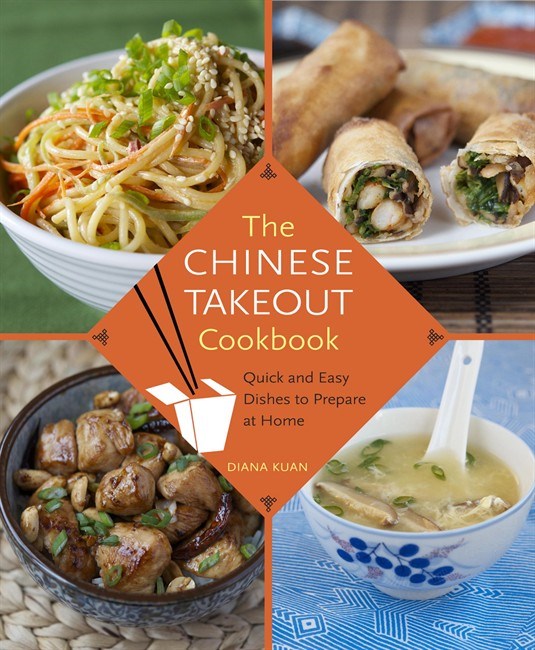TORONTO - The Champagne corks may have been popped for many, but a huge segment of the population in Canada and around the world is still waiting to usher in the new year. People in China and many other countries with a significant Chinese population will welcome the Year of the Snake this Sunday.
Also called the Lunar New Year or Spring Festival, celebrations can last for several days, with parades and fireworks. Family time includes eating special food and gift-giving, especially red envelopes containing money for children, and wishes for prosperity and longevity.
Diana Kuan, author of "The Chinese Takeout Cookbook: Quick and Easy Dishes to Prepare at Home" (Ballantine Books), hopes to bid adieu to the Year of the Dragon with her family in Boston.
"We always go out for dim sum at least a few times. I have a big extended family there, so everyone wants a chance to treat everyone else, so we end up having a lot of dinners and dim sum brunches."
If she's not able to go to Boston, she stays home in New York, gathers a group of friends and goes out for dim sum, a style of Chinese food prepared as bite-sized or individual portions of food traditionally served in small steamer baskets or on small plates.
Kuan, who teaches Chinese cooking, also writes a food blog called Appetite for China, which she started while working in Beijing and Shanghai for about two years giving cooking classes to travellers and expats.
The 30-year-old grew up watching her family run Chinese restaurants and bakeries in Puerto Rico and suburban Massachusetts and then did a culinary arts degree. She has done catering and worked in a pastry kitchen.
She started writing the blog "mainly to record regional cuisines from around China that I was experiencing for the first time. But over time I got all these emails from people back in the U.S. asking questions about how to make fried wontons or General Tso's chicken, orange chicken, just stuff that I also grew up eating in restaurants, so I kind of got nostalgic for that and started putting up more and more of those recipes on the site."
When she moved back to New York in 2010, she read "The Fortune Cookie Chronicle," a book published the year before in which then-New York Times reporter Jennifer 8. Lee traces the history of the Chinese-American experience through food.
"The only thing I thought the book was missing was recipes, so I wanted to create the cookbook that kind of centred around Chinese food in America and all the recipes I grew out of this integration of the two cultures."
In "The Chinese Takeout Cookbook," which came out in December and is also available as an e-version, Kuan features about 85 recipes, many of which are takeout classics. There is a section on ideas for planning a complete Chinese meal, including Chinese New Year specialties.
"I just want to encourage people to not be intimidated by Chinese cooking in that it's very easy to pick up, and once you have the ingredients you can make all these dishes with healthier and better ingredients and faster than it would be to order takeout," Kuan said in an interview from New York.
She adds that sometimes food ordered in "can be greasy and you're not sure what ingredients are in it and you're not sure whether MSG has been used." Monosodium glutamate is used to enhance the flavour of some foods and is safe, but some individuals who consume it may exhibit an allergic-type reaction or hypersensitivity, Health Canada says on its website.
A chapter on the main ingredients used in Chinese cooking highlights such vegetables as bamboo shoots, bok choy and shiitake mushrooms, sauces ranging from bean to fish and oyster, special spices and various types of noodles.
She finds many students in her classes feel some trepidation about Chinese cooking because the sauces are a little different than what they're used to.
"If you get familiar with the sauces you only need six or seven basic sauces to start with and once you build up a pantry, then you can make almost every single recipe in the Chinese repertoire."
On the first night of Chinese New Year, Kuan says her family always eats the vegetarian dish called Buddha's Delight, and she has included the recipe in her cookbook.
"And then when we go out we have things like dumplings, other forms of noodles, and turnip cakes and water chestnut cakes. Definitely a dim sum dish that we always order."
Many foods served during Chinese New Year celebrations have special meaning, such as long noodles for a long life or a whole chicken to symbolize family togetherness.
Dumplings are shaped to resemble little parcels of gold.
The most popular way to eat them is with a standard filling of pork and mushroom or pork and cabbage and then pan-fry them. "You can also do a vegetarian version like spinach and mushrooms and scallions or you can do a seafood one with shrimp and crab," says Kuan.
You're only limited by your imagination "and what can fit inside a little dumpling wrapper."
—�Ĕ�Ĕ
Online:
http://appetiteforchina.com/



